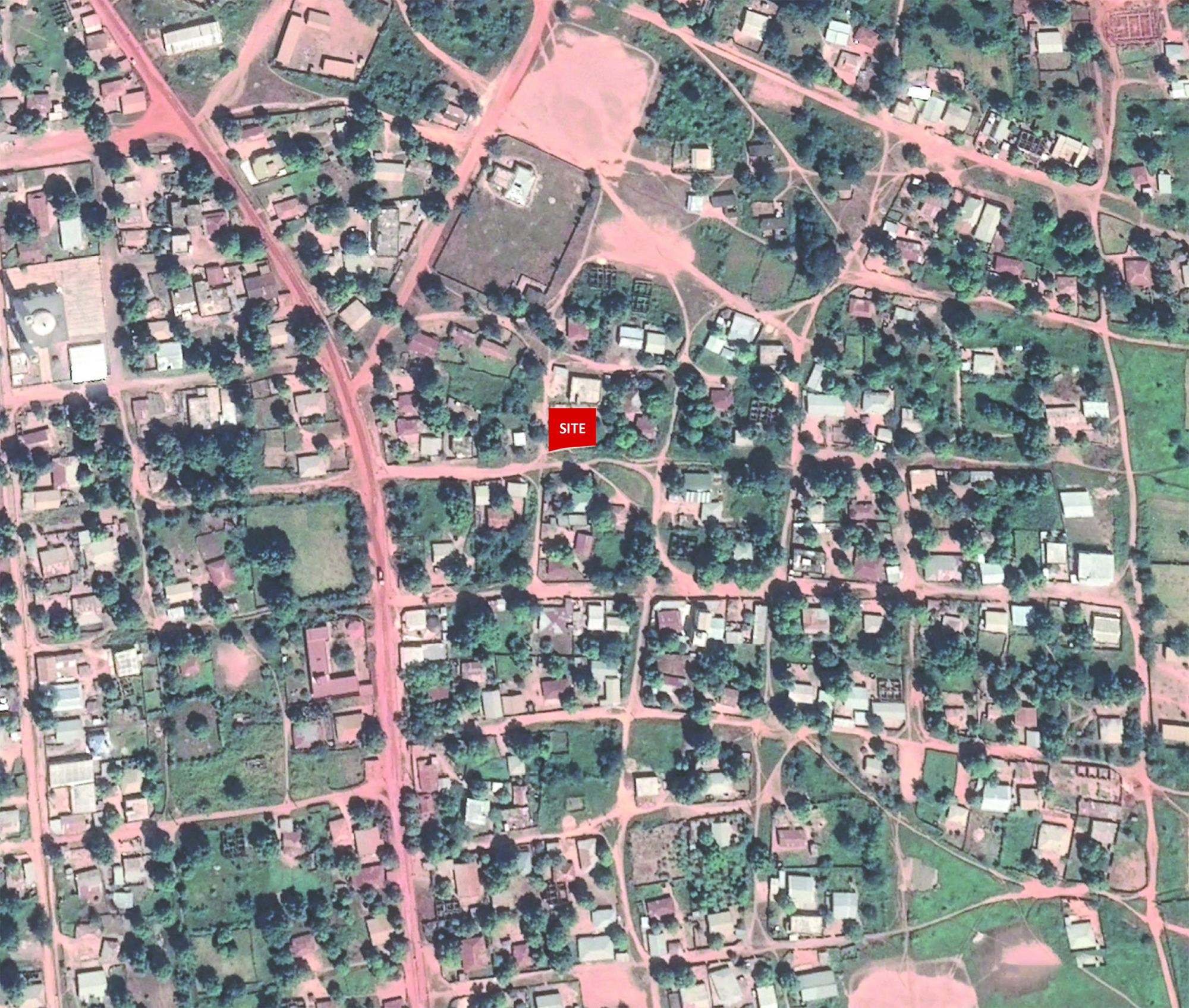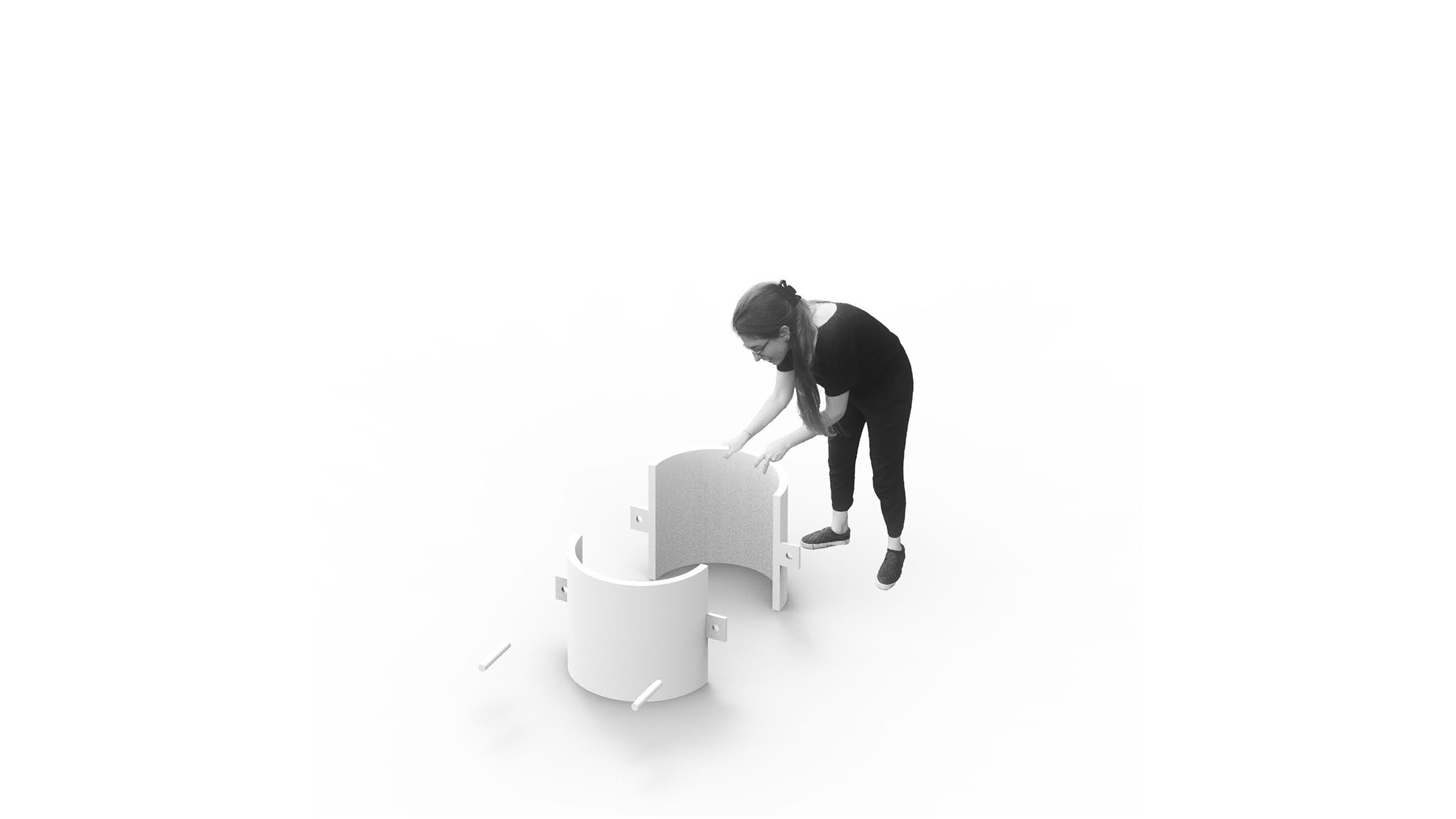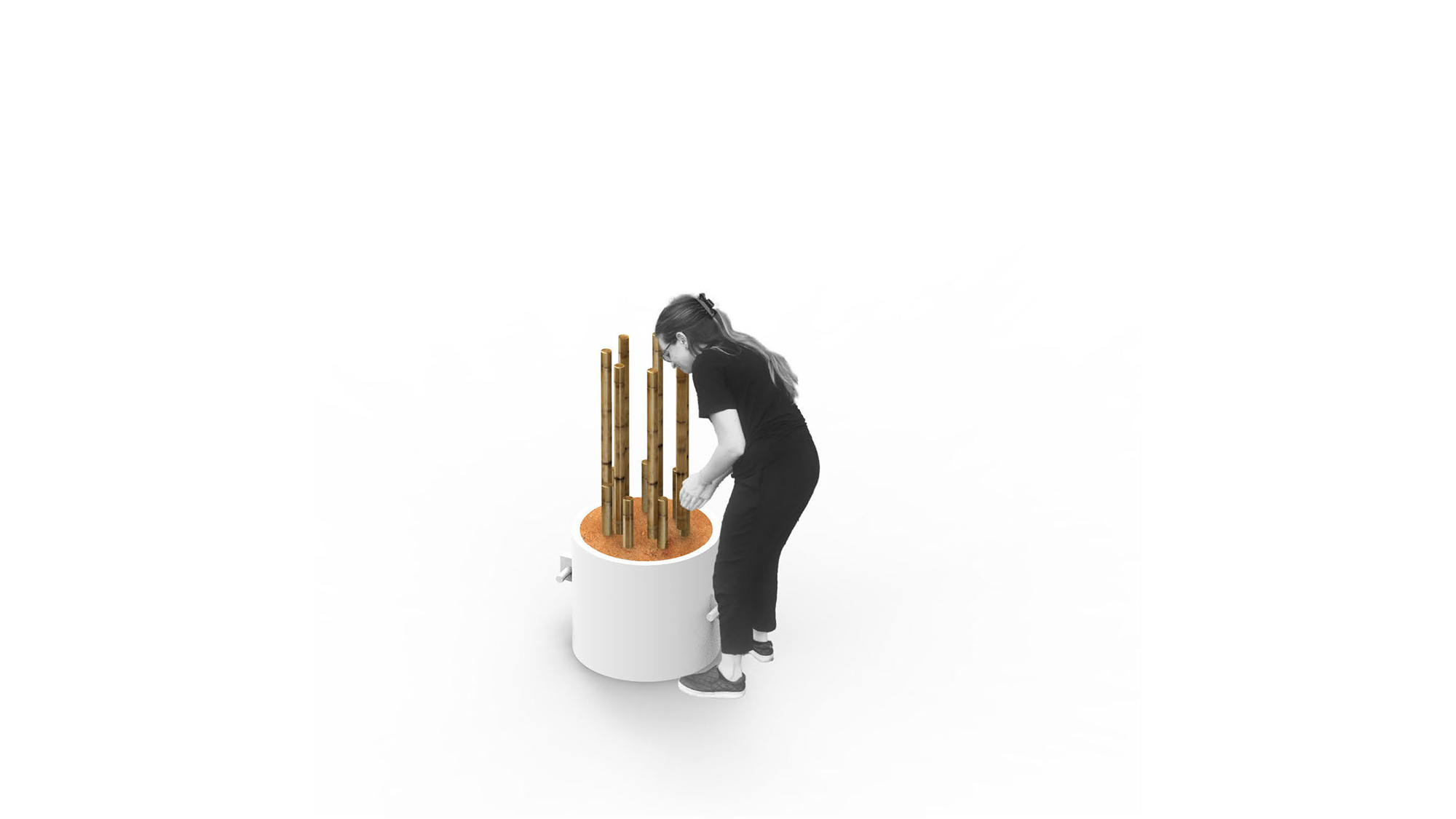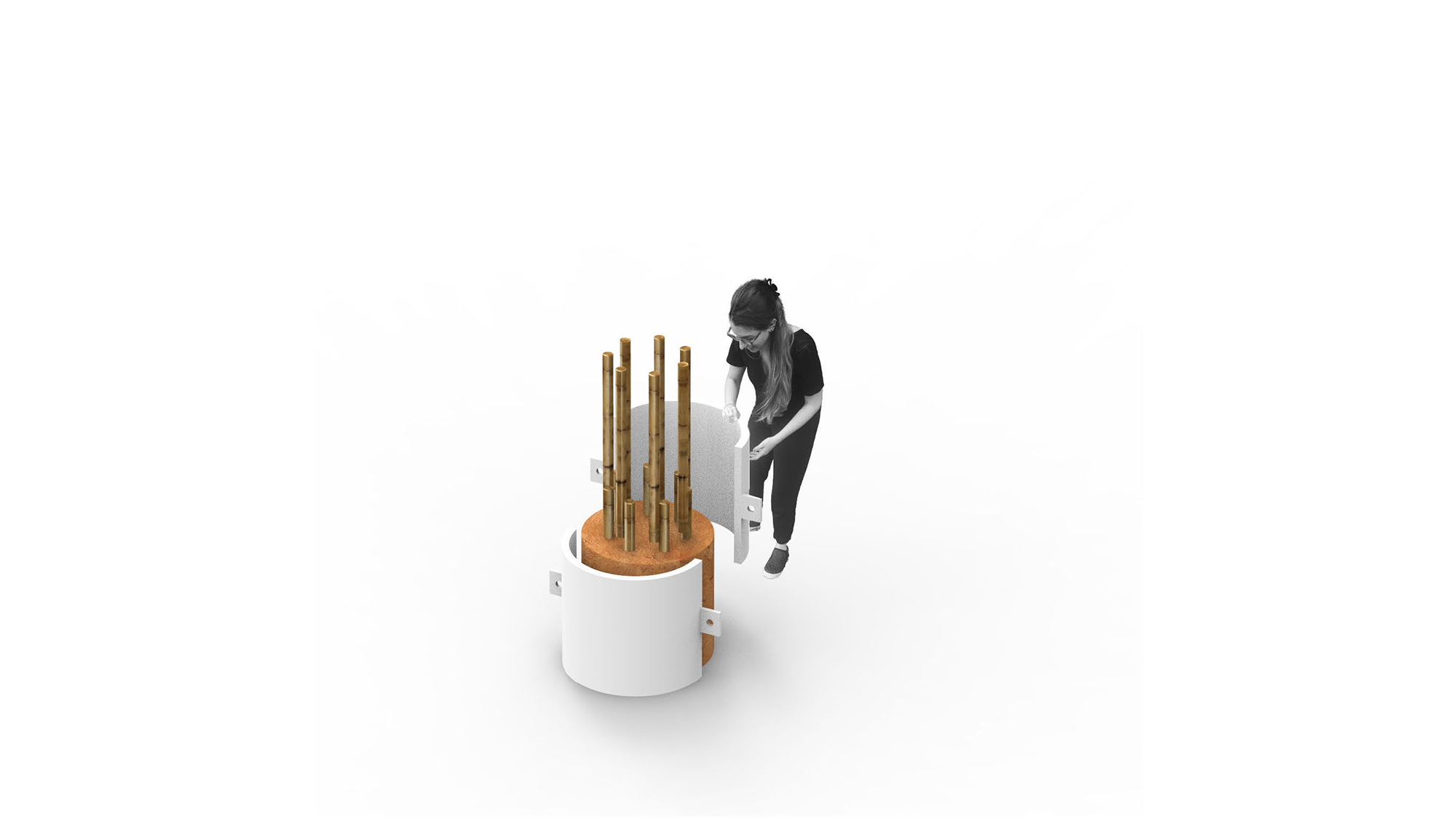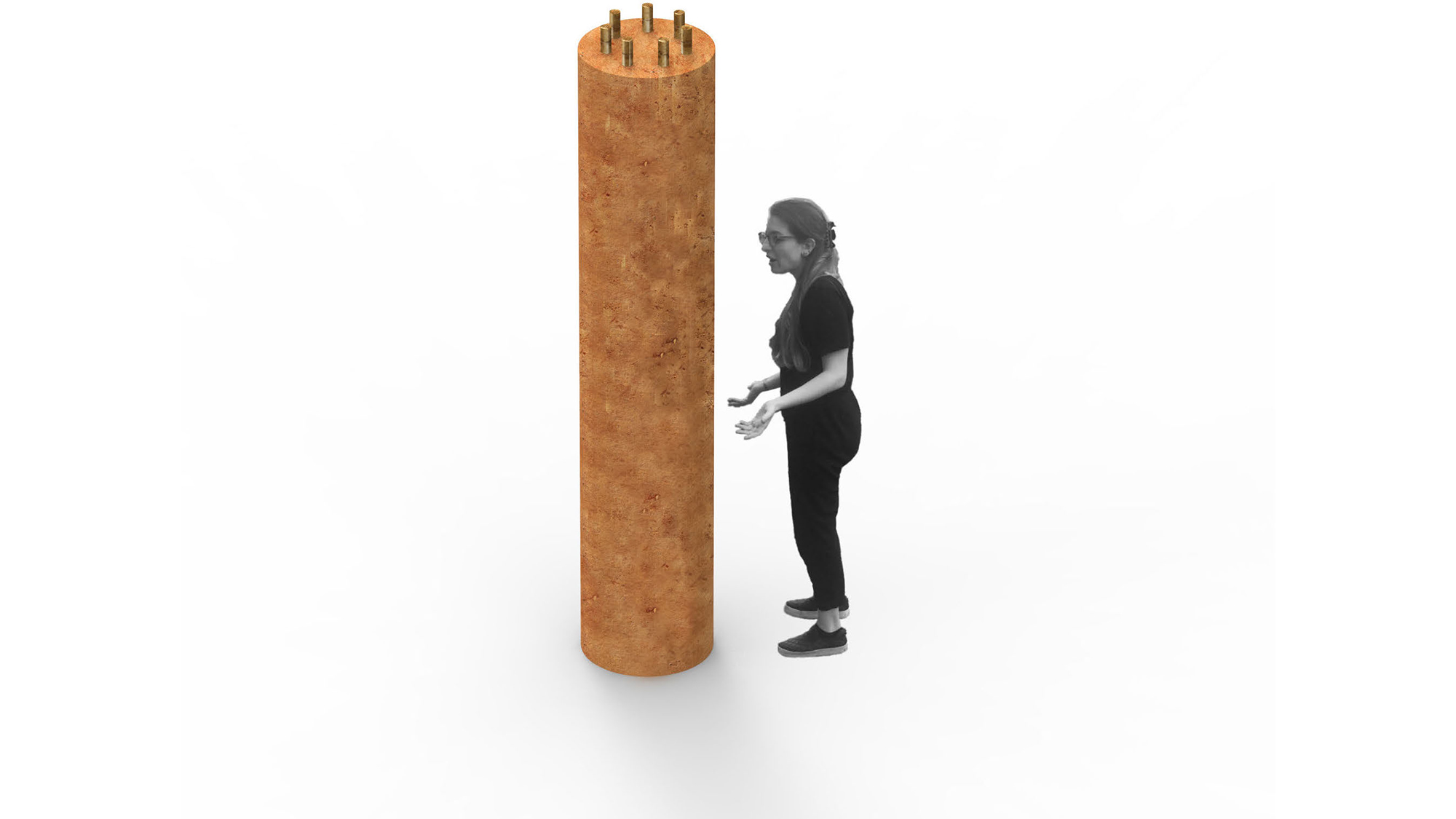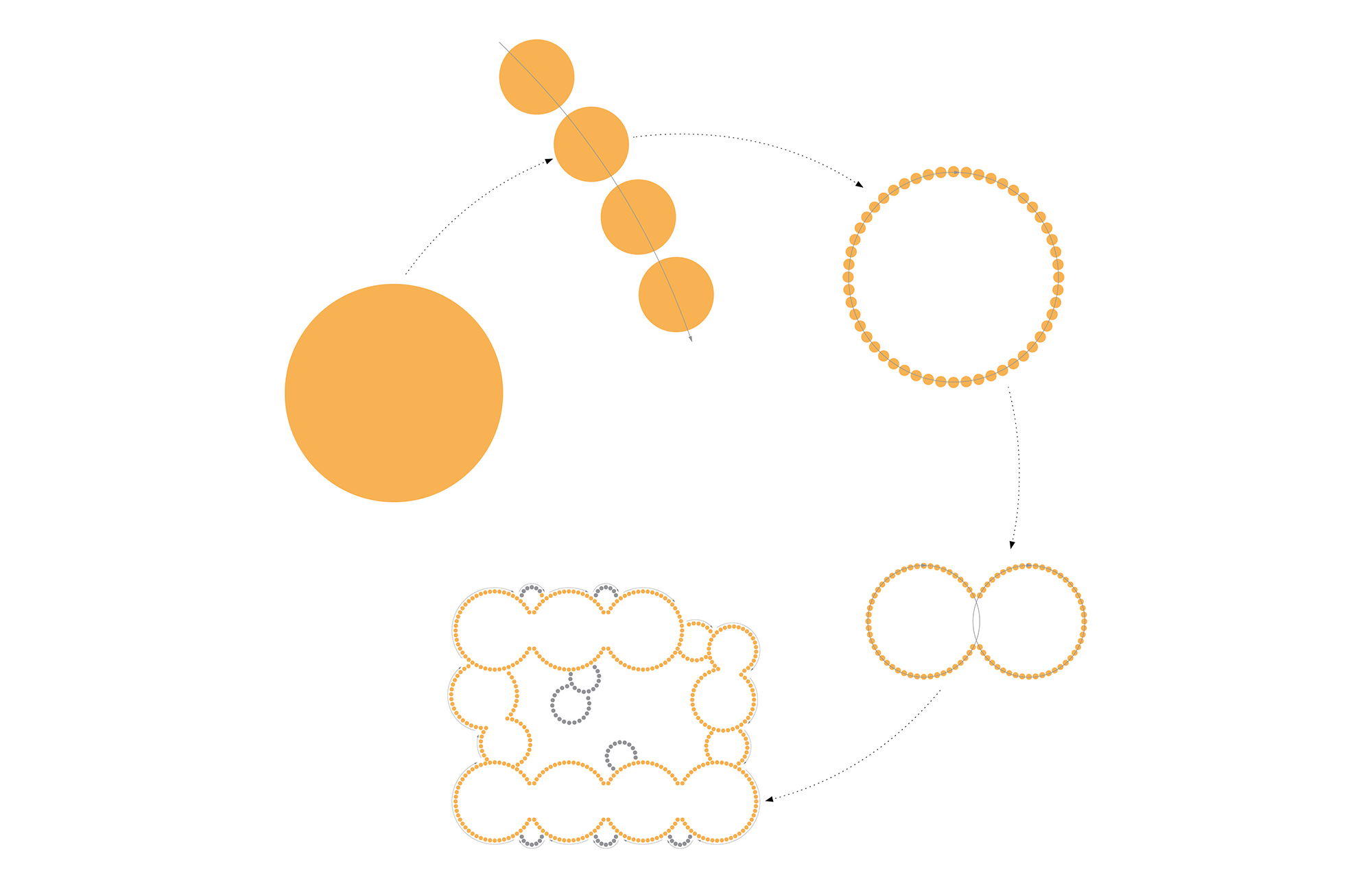 Image © Efficiency Lab for Architecture
Image © Efficiency Lab for ArchitectureThe Senegal Elementary School design has two primary goals: The first is to rebuild the existing school campus which is in need of new facilities, and the second is to teach a new way of construction to the local population which they could then employ in other projects. Once completed, the school will be able to have 300 students on a self-sustaining campus.
The Senegal Elementary School project is conceived as a bottom-up design approach, starting from the exploration of a tectonic integer – the rammed earth column – and expanding from that to defining spaces, and further propagation of individual spaces into forming the school campus. The design proposal offers a series of innovative building systems to provide ease of construction to local labor.
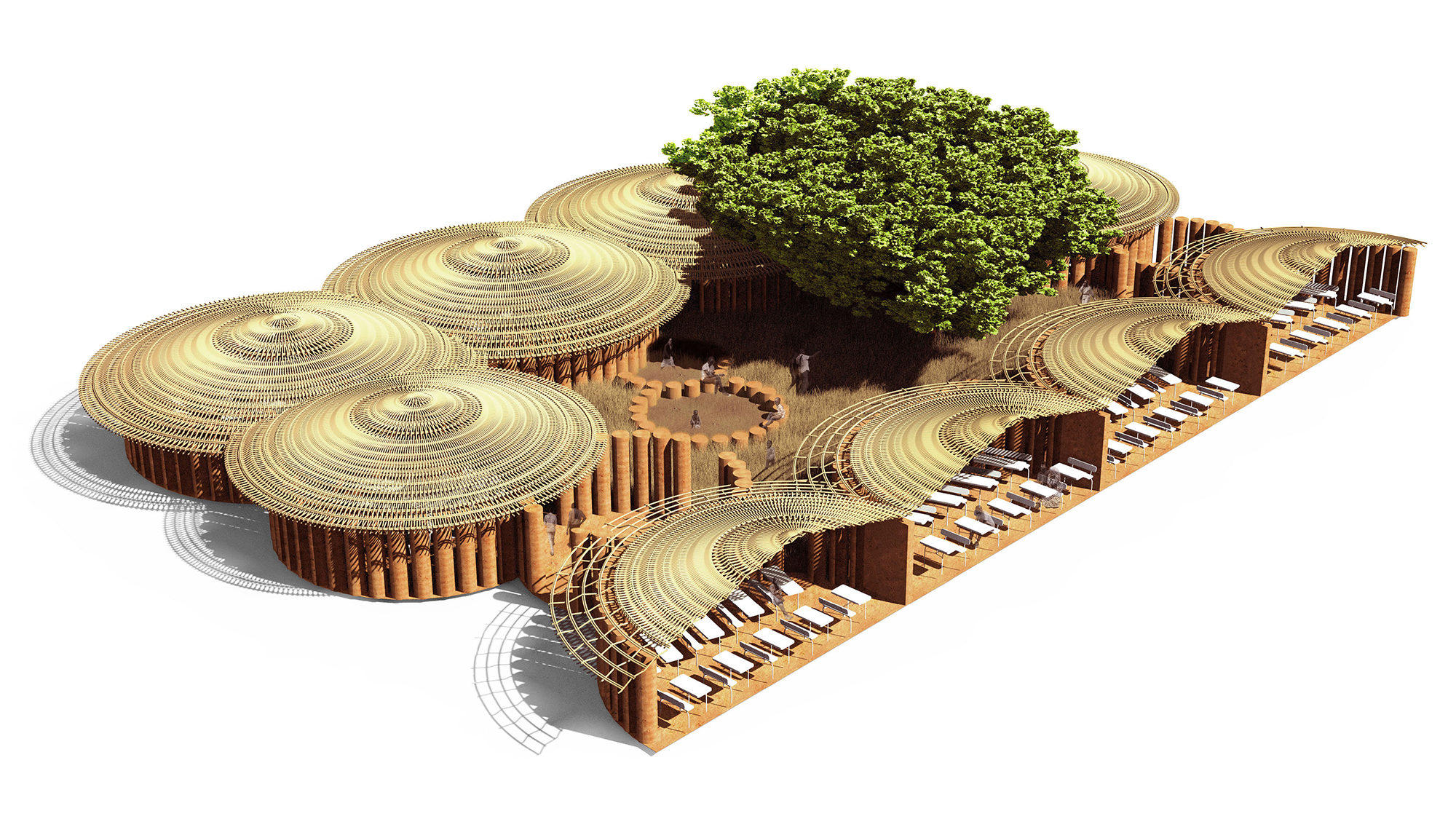 Image © Efficiency Lab for Architecture
Image © Efficiency Lab for ArchitectureThe project proposes an innovative approach to rammed earth structures by creating a circular, slip formwork strategy that enables rammed earth columns to be built without the need for elaborate scaffolding and formwork braces. The circular geometry enables structural integrity of the formwork against lateral pressure during the ramming process. Rammed Earth columns are arranged to form circular plan, that forms the spatial integer of the campus. The columns are spaced with a 75mm gap to allow natural light into the space as well as provide cross ventilation. The gaps between the columns also allow for ease of construction of adjacent columns, as well as create spaces for the roof rafters to be interlaced with the columns. The roof is created on the floor from woven bamboo, and the hoisted up to its final elevation. Each circular space is nested together to create the school’s cellular spatial structure. The spaces are adjoined by a masonry wall, created by L shape bricks that interlock in all three directions forming a good bonding for lateral stability of the wall. The school is composed of twelve pavilions organized around the existing tree, creating a courtyard for the school that will serve as the social heart. The school campus is programed to be self-sustaining encompassing not only classrooms, a library and reading nook, and offices, but also an independent well, corrals, and orchards.
 Image © Efficiency Lab for Architecture
Image © Efficiency Lab for Architecture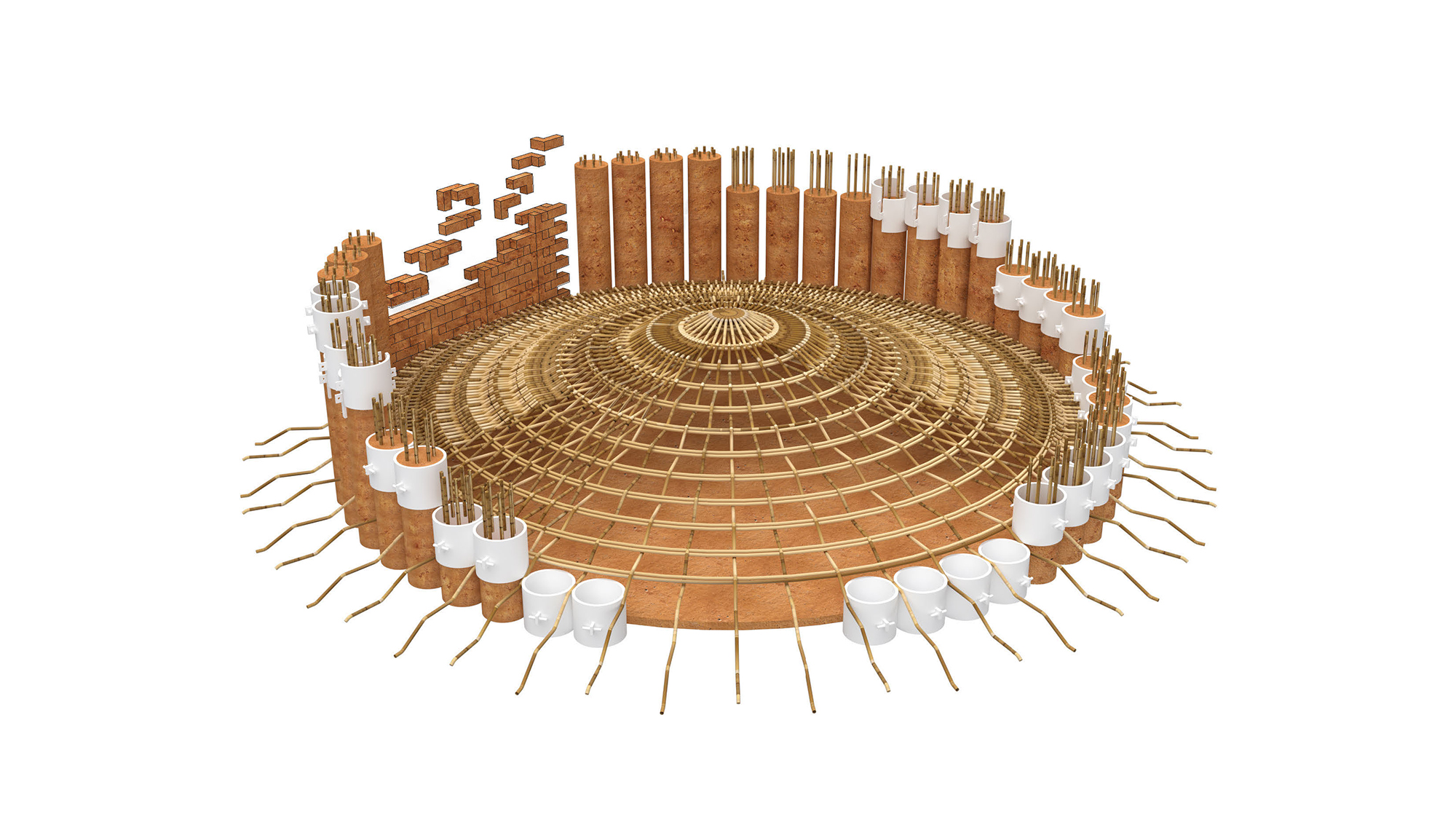 Image © Efficiency Lab for Architecture
Image © Efficiency Lab for ArchitectureTectonic Integer: bamboo reinforced, slip formed, rammed earth column construction
The project proposes an innovative approach to rammed earth structures by creating a circular, slip formwork strategy that enables rammed earth columns to be built without the need for elaborate scaffolding and formwork braces. Each individual column, circular in plan, is poured and rammed in 500mm vertical sections. The circular geometry enables structural integrity of the formwork against lateral pressure during the ramming process. After each section dries, the formwork slips up to the next section, similar in logic to self climbing jump formwork systems. This logic of slipping reduces the need for extensive formwork.
The Spatial Unit
Rammed Earth columns are arranged along a circular plan, that forms the spatial integer of the campus. The columns are spaced with 75mm gap to allow natural light into the space as well as provide cross ventilation. The gaps between the columns allow for ease of construction of adjacent columns, as well as to create spaces for roof rafters to be interlaced with the columns. The spaces are adjoined by a masonry wall, created by L shape bricks that interlock in all three directions forming a good bonding for lateral stability of the wall.
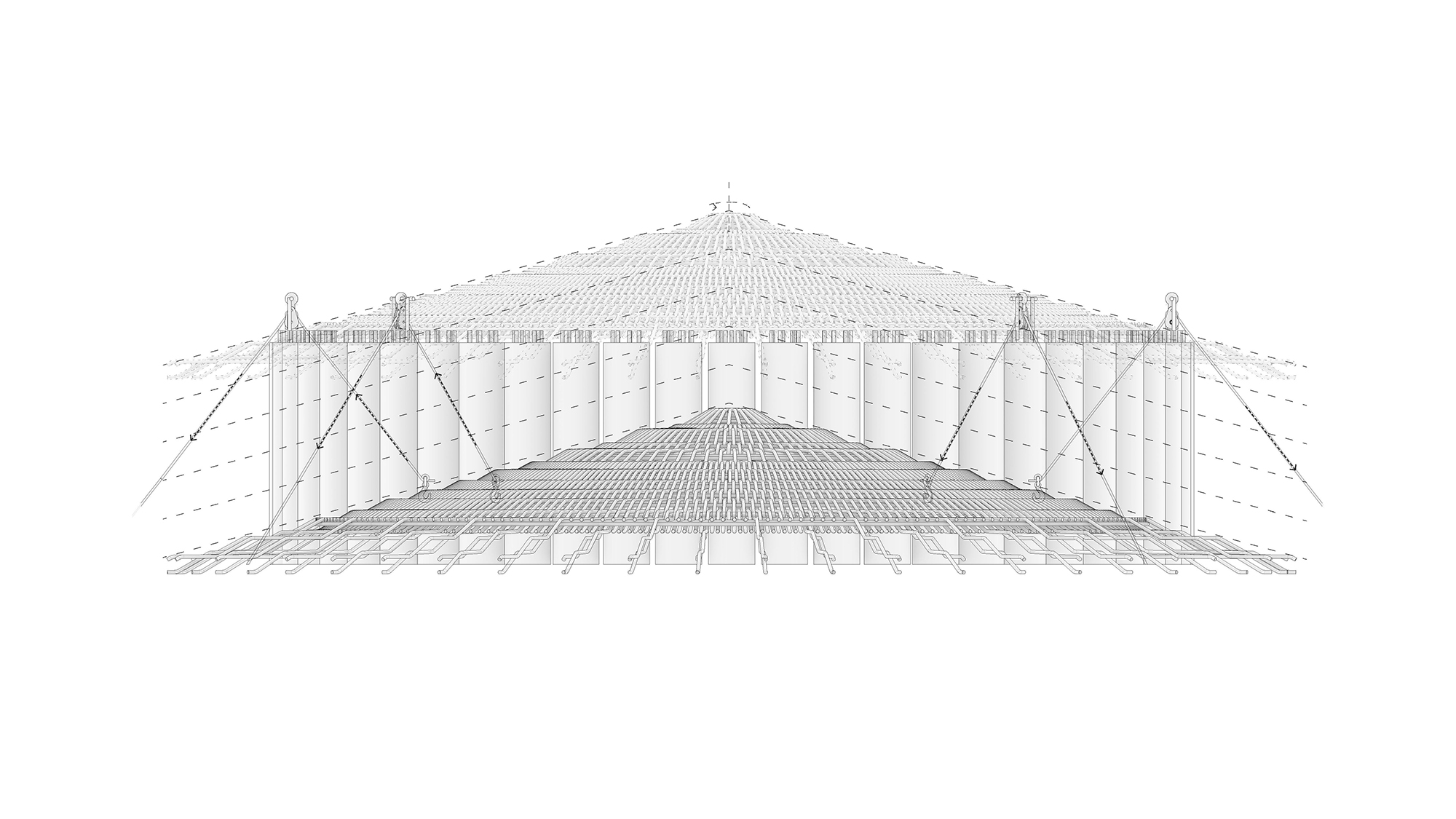 Image © Efficiency Lab for Architecture
Image © Efficiency Lab for Architecture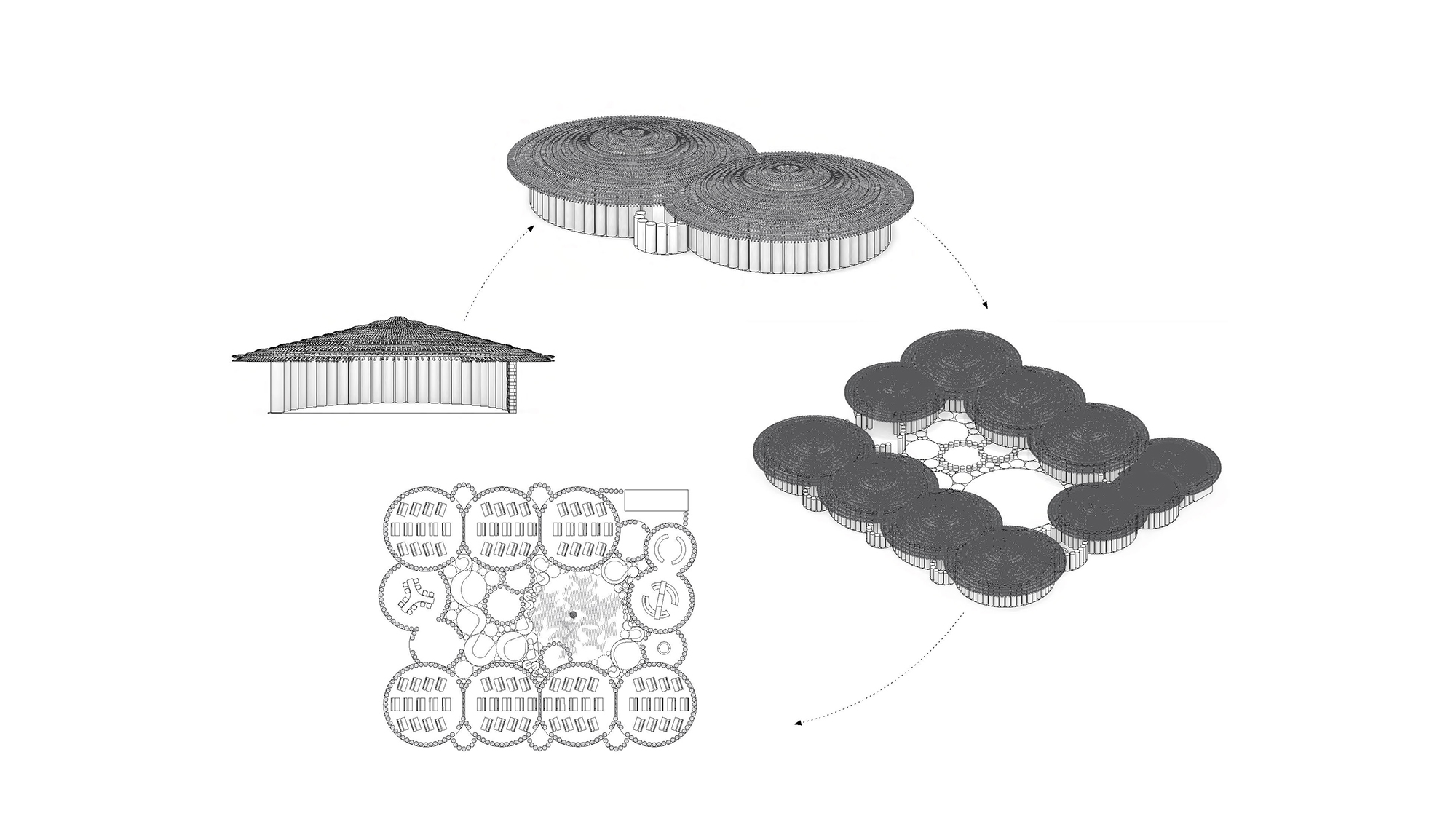 Image © Efficiency Lab for Architecture
Image © Efficiency Lab for ArchitecturePropagating the Unit
Each circular space is nested together to create the school’s cellular spatial structure. The cellular spaces are organized around the existing tree, creating a courtyard for the school, that will serve as the social heart. The entry to the school is marked by an open pavilion allowing passage directly to the courtyard. The other pavilions are accessed through the courtyard.
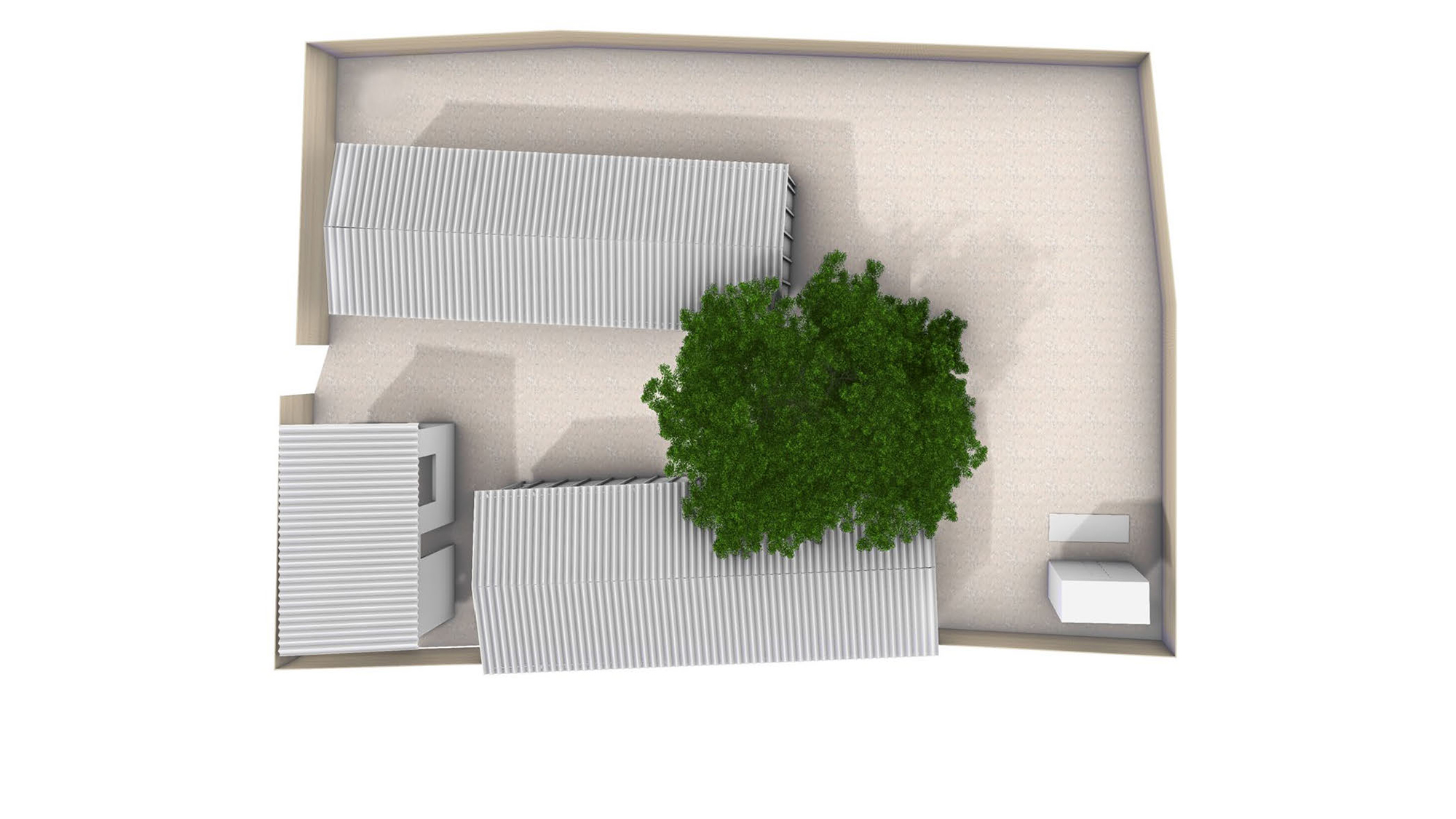 Image © Efficiency Lab for Architecture
Image © Efficiency Lab for Architecture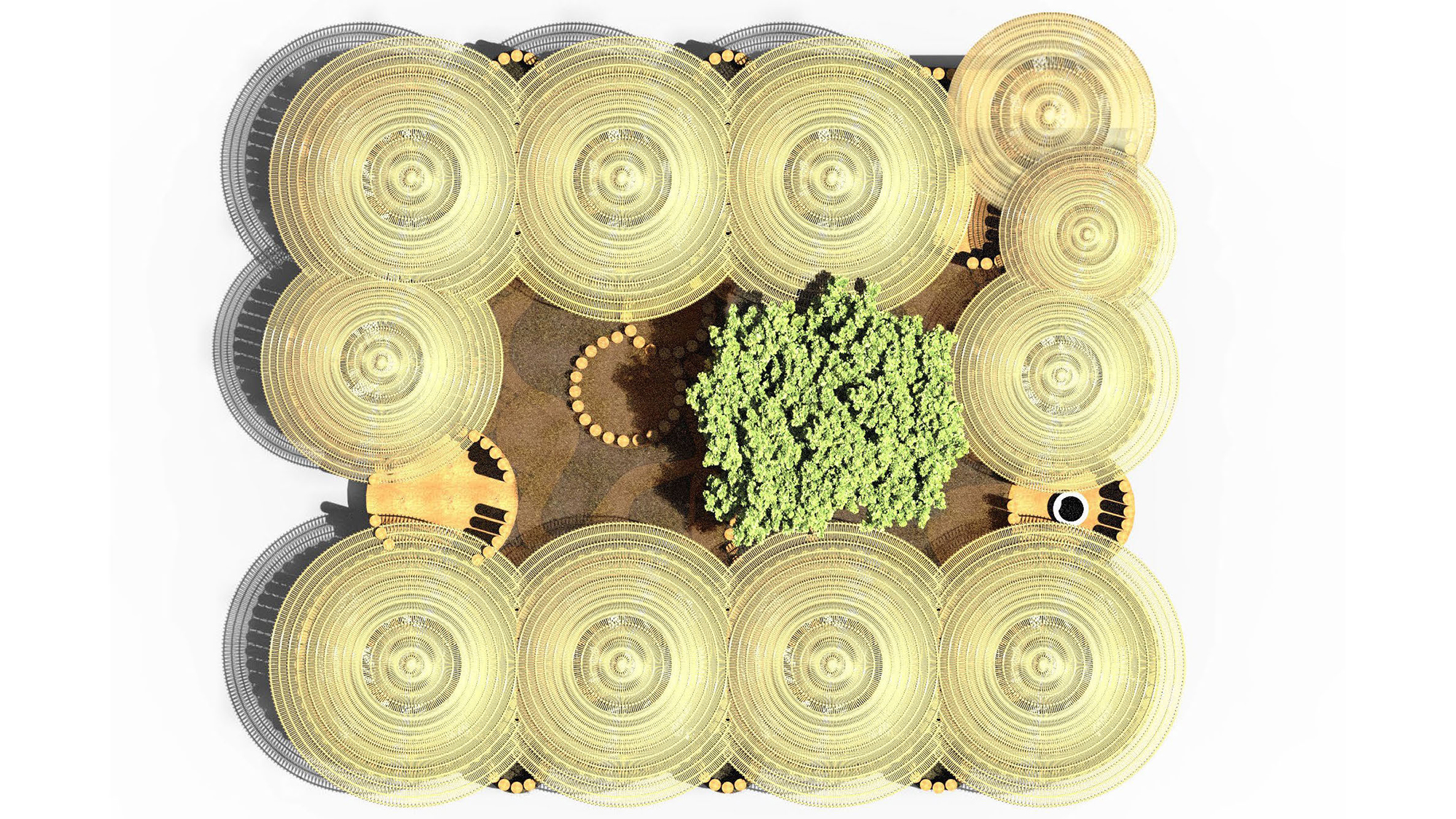 Image © Efficiency Lab for Architecture
Image © Efficiency Lab for Architecture Image © Efficiency Lab for Architecture
Image © Efficiency Lab for ArchitectureThe design has two primary goals. The first was to rebuild the existing school campus which is in need to new additional space, and the second was to teach a new way of construction to the local population which they could then employ in other projects. Once completed, the school will be able self-sustaining and able to hold over 300 students in 7 classrooms.
However, the true impact of our design proposal lies in the innovation of the rammed earth column construction. The development of creating a new construction system came from the knowledge that their existing structures (primarily created from clay bricks) didn’t last more than 5 years, and that other construction systems involve materials that are not local and would need to be imported. The innovation of the column construction relies solely on local materials, creating a cost- effective way of construction which can be replicated throughout the village.
The project engages with the community by creating a new way of construction which will in turn allow them to build more structure and develop their local built environment. Since the project will use local labor, we will be teaching the community the tools they need to better their construction techniques. The innovative rammed earth column construction also uses only local materials which makes it cost-efficient and removes the need for outside intervention in the construction process. We hope that this new system will create longer lasting structures that can be developed for a myriad of programs. Once the school is constructed, the campus will continue to help the community through its orchards and rainwater collection system. Through the orchards, the school will be able to grow its own food to feed the students at lunch, removing the need for them to travel home mid-day and helping their families who may not be able to feed them. The rainwater collection system will be used to irrigate the orchards and used for other water needs on campus. This will make the school’s water need self-reliant and will help the local community by removing the school’s dependence on the community well.
